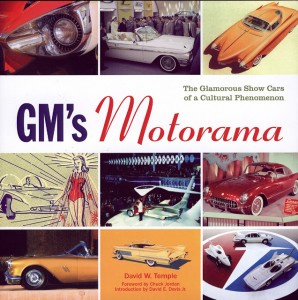Making It: Manufacturing Techniques for Product Design
No matter what the Easter Bunny says, cars don’t grow on trees. Someone has to make them! And that someone has to know how. How to boil plastic, slice steel, bend glass, scrape ceramic, inflate wood (yes, inflate).
Already you can see that there’s more to it than you might have thought. Even if you don’t want to actually do any of those things, it never hurts to know how they work. Something as multi-faceted as a car or an airplane is a veritable symphony of materials and shapes, but so is the content of your kitchen cupboard and your cell phone and pretty much anything you encounter in this industrial world on any given day.
This fine book shows everything from electron-beam machining to pickling (as in cleaning, not food preservation). Be it tried-and-true methods like turning/lathing or one of the newest techniques for processing composites, pulshaping, you’re sure to end up looking at the world in wide-eyed wonder!
First published in 2007, the book is written by a designer for designers with the goal of teaching designers enough about industrial processes—including costs and time!—to stop the “production guys” from complaining that designers ask for the moon without any regard to manufacturing realities. This second edition contains almost 40 more pages, including nine new processes and an all-new section of over 40 finishing techniques.
 The book is best thought of as a primer, a catalog of over 100 production methods. It is a handy, introductory reference guide, not an encyclopedia! Lefteri has authored an entire series of books on individual materials (Materials for Inspirational Design), curates an annual feature at the UK’s largest trade show for designers and architects (100% Design), and edits Ingredients magazine whose specific purpose it is to bridge the gap between designers and material manufacturers. He also runs an eponymous packaging, furniture and product-design business and is Senior Lecturer in Product Design at Central Saint Martins College of Art and Design, London (a department of which produced this book). Think that qualifies him to know a thing or two about how to make stuff? You bet.
The book is best thought of as a primer, a catalog of over 100 production methods. It is a handy, introductory reference guide, not an encyclopedia! Lefteri has authored an entire series of books on individual materials (Materials for Inspirational Design), curates an annual feature at the UK’s largest trade show for designers and architects (100% Design), and edits Ingredients magazine whose specific purpose it is to bridge the gap between designers and material manufacturers. He also runs an eponymous packaging, furniture and product-design business and is Senior Lecturer in Product Design at Central Saint Martins College of Art and Design, London (a department of which produced this book). Think that qualifies him to know a thing or two about how to make stuff? You bet.
Equally at home on both sides of the fence he is the first to fault his design colleagues’ “let’s worry about it later”-attitude rather than thinking about materials right from the start. Many ways lead to Rome, and products can be made in many different ways. Picking the right one is critical for manufacturing ease, production cost, durability, intended use and, ever more important, ecological considerations.
If you’re new to this racket, this book is as good a guide as you’re likely to find. Just reading the Introduction Lefteri wrote is an inspiration. He is as passionate about his profession as he is knowledgeable and seamlessly switches between big picture and micro detail. It does help to know a little beforehand so as to have at least a basic sense for where in the book to look because it is divided by the shapes that can be produced by each process. Your first stop is a multi-page chart comparing different processes by cost, unit output per hour, quality of surface finish, shape, size, manufacturing tolerance, and usable materials. The divisions in this chart match the organization of the subsequent chapters; each is further divided into sub-processes. Each process is covered on 2–4 pages in systematic manner, beginning with a basic description and the illustration and specs of a representative end product, a narrative treatment of most of the data points on the aforementioned chart, a few illustrations (photo or line art) of key steps in the process or operating principles of machinery, and a pro/con summary (cf. “very accurate” / “slow”).
 The book is easy to read even if you are a complete novice and will make you unendingly curious. Just looking at the arrangement of the type on the book cover is a source of fun. The names of the processes that look brown on the cover photo are actually blind debossed into the cover board, a simple thing but oh so apropos. Befitting its topic, from color to type to layout the book is thoughtfully conceived throughout. Glossary. Good Index.
The book is easy to read even if you are a complete novice and will make you unendingly curious. Just looking at the arrangement of the type on the book cover is a source of fun. The names of the processes that look brown on the cover photo are actually blind debossed into the cover board, a simple thing but oh so apropos. Befitting its topic, from color to type to layout the book is thoughtfully conceived throughout. Glossary. Good Index.
Even if you’re just a casual consumer who enjoys watching TV shows like “Ultimate Factories” or “How’d They Do That?” you’ll find this book a handy companion.
Copyright 2012, Sabu Advani (speedreaders.info).
Making It: Manufacturing Techniques for Product Design
by Chris Lefteri
Laurence King Publishers; 2nd ed. (March 26, 2012)
288 pages, 250 b/w & color illustrations, softcover
List price: $35
ISBN-13: 978-1856697491



 RSS Feed - Comments
RSS Feed - Comments






































































 Phone / Mail / Email
Phone / Mail / Email RSS Feed
RSS Feed Facebook
Facebook Twitter
Twitter